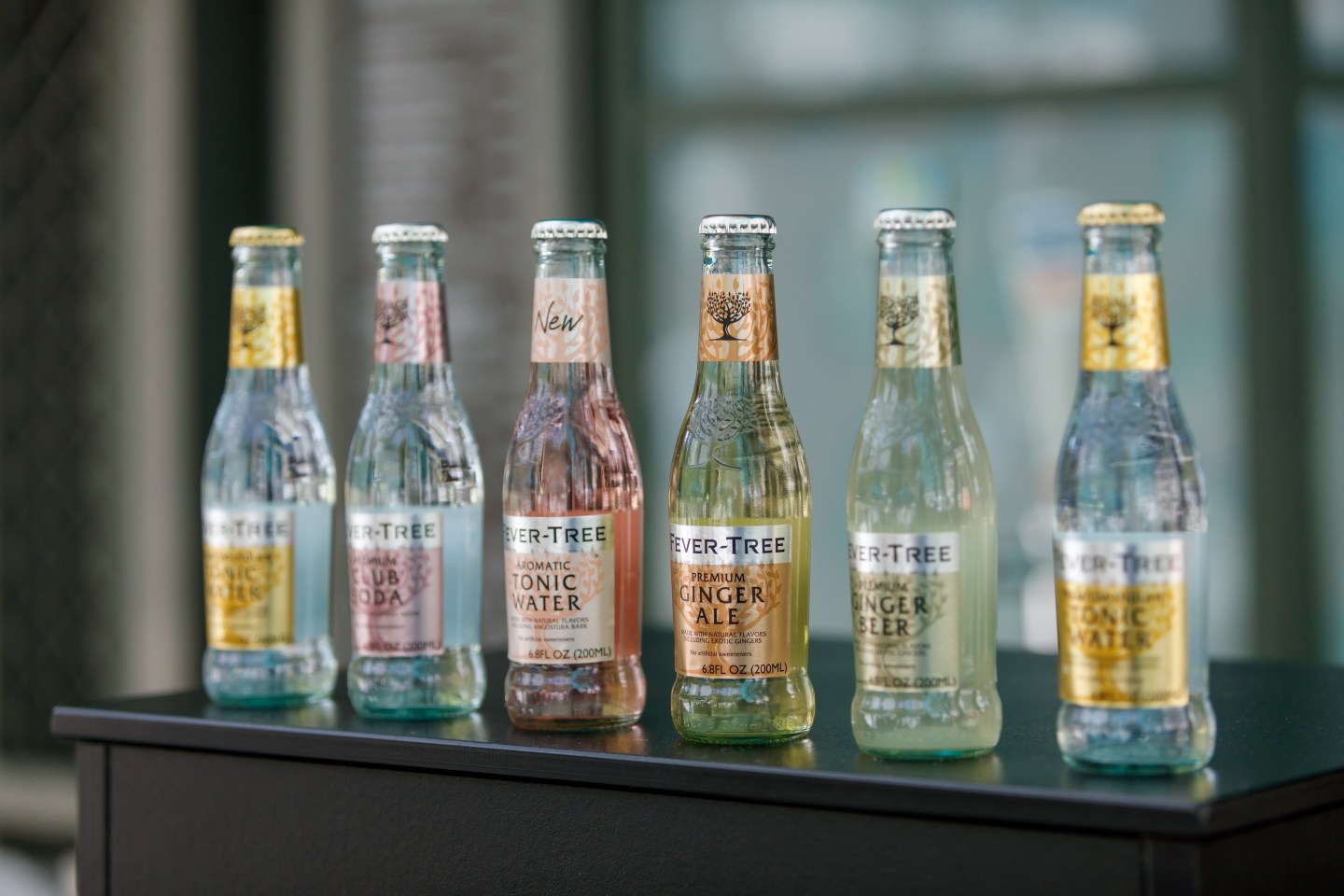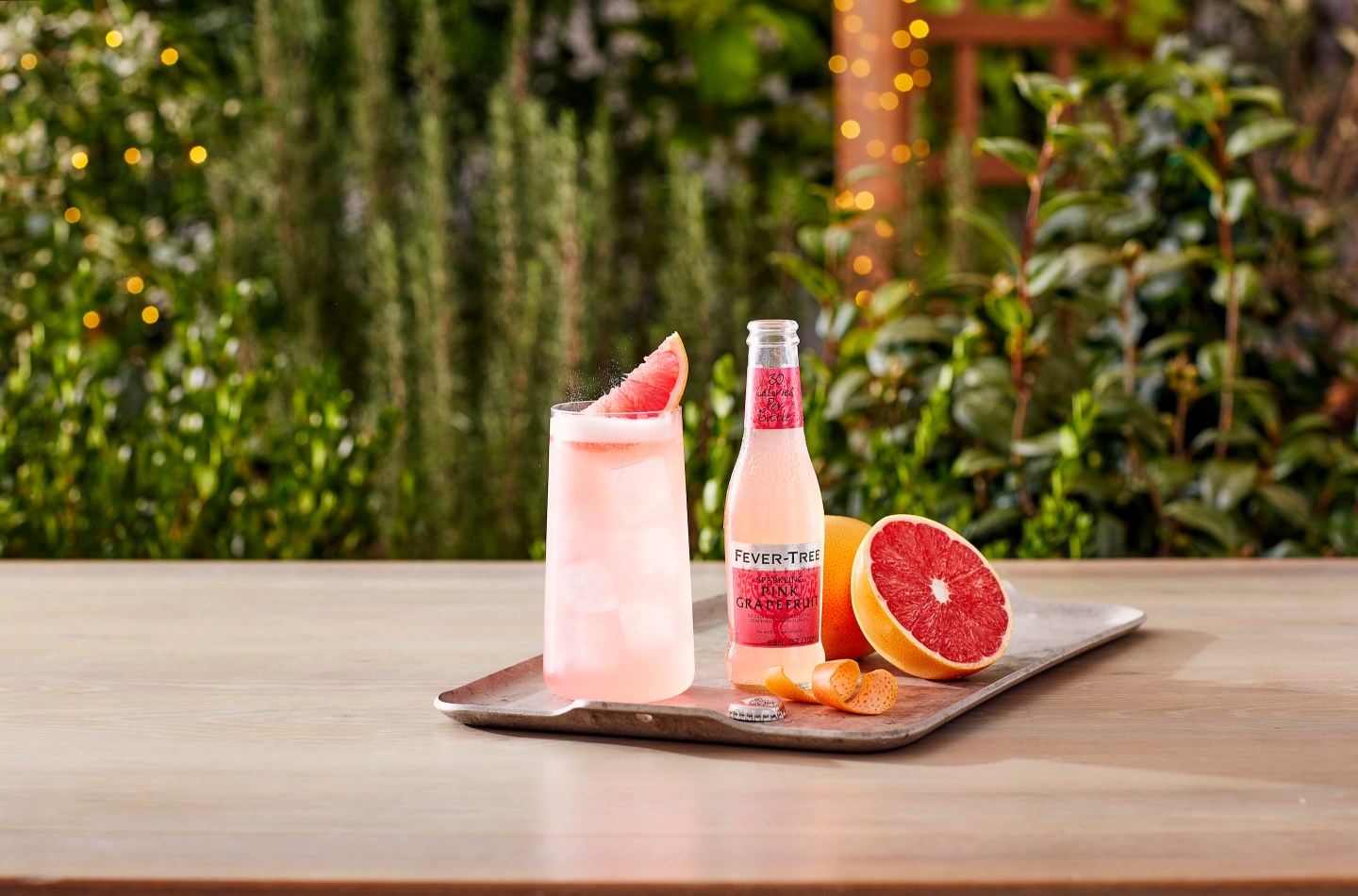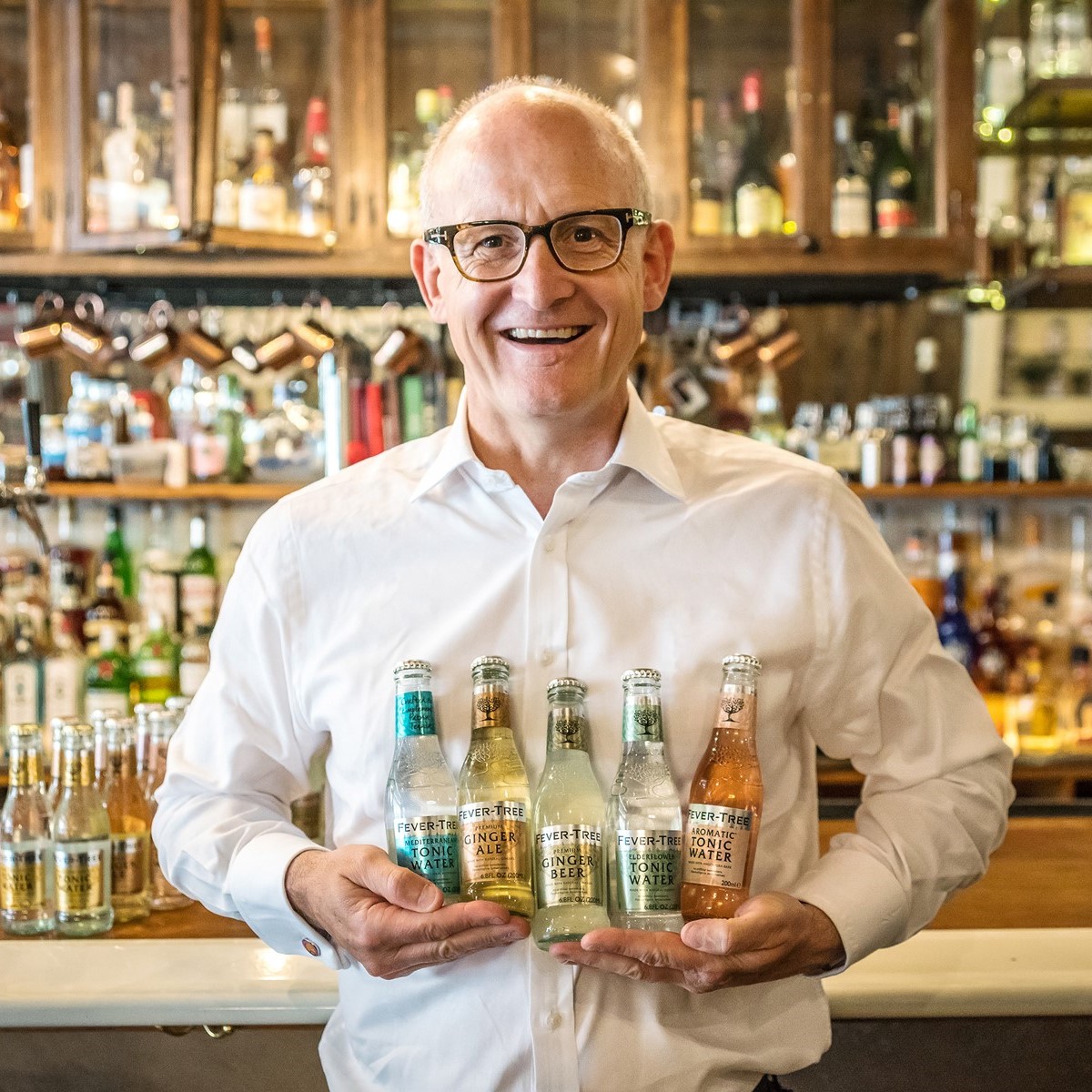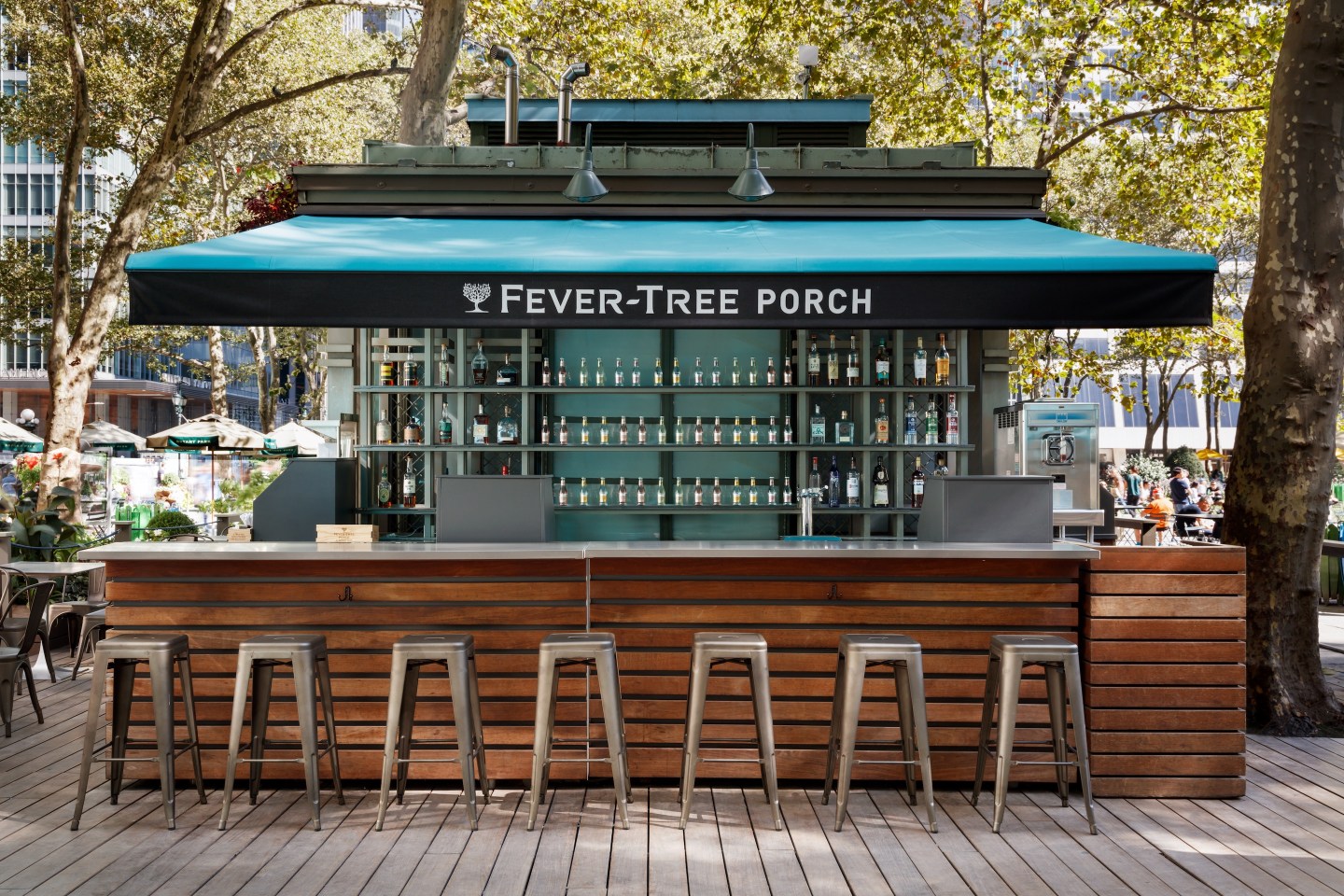Picture it: the trendy Wythe Hotel in Brooklyn, N.Y., with sweeping views of Manhattan and the East River. The entire U.S.-based team of Fever-Tree—which makes tonics, ginger ale, and assorted drinks meant for mixing cocktails—comes together to map out the year.
The vibe is buoyant. Revenue for fiscal 2019 soared 33% in the U.S. from the year prior. The sales team from all over the country joins with New York–based coworkers from the finance and supply-chain departments. The marketing team presents 110 slides showcasing plans that include an expansion of Fever-Tree branded outdoor bars known as porches, Cinco de Mayo parties, experiential events, and new drinks to hit the market in the coming months.
The Wythe Hotel annual meeting was held in early March 2020. “A week later, we went into hibernation,” says Amanda Stackman, marketing director for Fever-Tree USA.

With tastings halted at bars and restaurants, Fever-Tree had to pivot. Funds that were meant to promote in-person tastings were instead put into digital and retail channels. A few drinks that weren’t pulling their weight on shelves were pulled. Fever-Tree donated umbrellas and bar carts to dozens of bars and restaurants to help them convert streets and sidewalks into outdoor dining spaces. And executives quickly made it clear to the team that no matter how disrupted the business would be, no furloughs would occur as a result of the COVID-19 pandemic.
And perhaps most important, the company kept innovating. Founded in 2005, Fever-Tree is often referred to as a U.K-based tonic maker, with flavors like lemon, cucumber, and elderflower often meant for pairing with gin. But the company has also expanded into ginger beer, soda water, and cola to offer a greater diversity of mixers for liquor.
During the pandemic, Fever-Tree launched a sparkling pink grapefruit, and did so without in-person tastings. “We did it all virtually,” says Charles Gibb, CEO of Fever-Tree North America.
Consumers stuck at home—not spending money on travel, apparel, or restaurants—were instead buying higher price point spirits, as well as premium-price mixers like Fever-Tree for an “affordable luxury.” Most were shopping at just two locations: grocery and liquor stores. To generate buzz, Fever-Tree worked with distributors like Southern Glazer’s to merchandise mixers next to popular spirits brands.
“If you think of the liquor store as a bar, merchandising next to gin is a great way of doing that,” says Gibb.

Sparkling pink grapefruit is meant to pair with tequila to create the Paloma cocktail, and strong off-premise sales helped Fever-Tree launch its most successful new product to date stateside. It helped that during the pandemic, tequila makers like Diageo reported that strong sales for higher priced tequilas led to an unexpectedly strong jump in sales.
The well-intended marketing plans for another new drink, Fever-Tree’s new lime and yuzu, also experienced a hiccup. The two flavors were to meant to evoke regional ties to Mexico, where tequila is made, and Japan, which would have recently been in the spotlight for the since-postponed Summer Olympics.
Still, Fever-Tree this year is planning to lean on familiar industry tactics to promote lime and yuzu: working with vodka brand Grey Goose on a spritz cocktail program, educating bartenders on the mixer, and launching on e-commerce channels.
“You can describe something 100 different ways, but once somebody tastes it, the lights go off,” says Katie Moslak, trade marketing director of Fever-Tree USA.

One of the largest challenges the business faced is that on-premise sales at bars, hotels, and restaurants were halted at the height of the pandemic, and to this day, demand from those channels still hasn’t fully recovered. Fever-Tree, like many others, had to quickly become digitally savvy.
Gibb says as luck would have it, Fever-Tree was part of an accelerator program with Google, giving the brand greater insights into what people were looking for online. Fever-Tree also relaunched its home page on Amazon (sales more than doubled last year on the e-commerce giant’s site) and worked with other retailers like Target, Drizly, and ReserveBar to position Fever-Tree well for the shift to online shopping.
Fever-Tree also commissioned bartenders to teach consumers how to make so-called pantry cocktails via Zoom events, using simple herb or citrus garnishes to elevate the at-home cocktail. “You can get creative and still have that great drink,” says Stackman. Fever-Tree would then repurpose the video content for Instagram and other social pages.
It all paid off, with U.S. sales jumping 23% in fiscal 2020.

Still, some challenges remain. Fever-Tree had intended to open more branded outdoor drinking porches like the one it opened in Bryant Park in New York City. Plans to unveil more in new cities remain on the back burner for now. Live events with tastings for influencers in trendy spots like Aspen and Pebble Beach likely won’t return until 2022 at the soonest.
“You hear about this roaring ’20s in the foreseeable future and that we are going to be out there again like the pandemic in the 1900s,” says Moslak. “I just don’t think it will necessarily be that way.”
That said, Fever-Tree projects sales will rise between 12% to 16% in 2021. And while Wall Street wanted more, Gibb is encouraged. He’s getting sick of Zoom and believes that quite soon, people will be mixing together in person again.
“You get many, many more great ideas when you are out with people than sitting in your office, because it is a human business,” says Gibb. “If you aren’t in a bar, you can’t see what people are drinking. If you aren’t in a restaurant, you don’t know what the food trends are. So there’s a lot of catching up to do, which is exciting.”
Subscribe to Fortune Daily to get essential business stories straight to your inbox each morning.